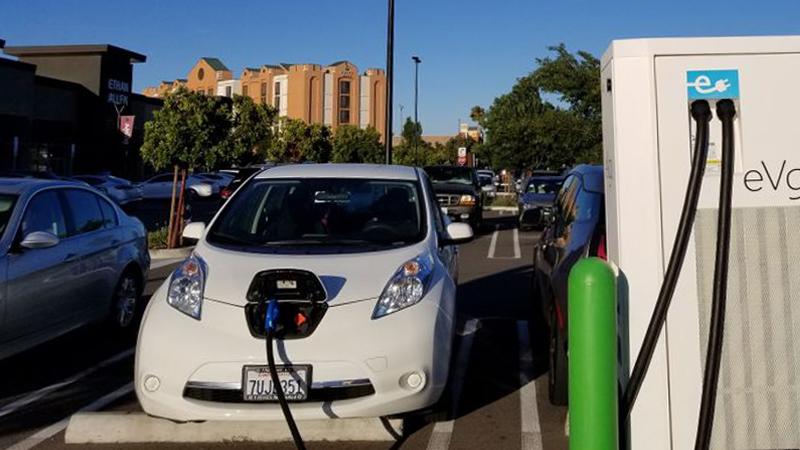
Electric car charging in Dublin, California. Smith Collection / Gado / Getty Images
A Tesla electric “Cybertruck” that looks like it was designed by Picasso. A Ford Mustang all-electric SUV that out-muscles its revered muscle car predecessors. Even the prospect of the gas-guzzling Hummer reborn as a 1,000-horsepower kilowatt-charged behemoth to intimidate other drivers.
With these and many more electric vehicle offerings pushing the edge of auto design, performance and possibly good sense, can there be any doubt that we’re well on our way to an electric transportation future?
“The public perception [of the electric vehicle marketplace] is primarily Tesla, but the reality is just about every major manufacturer has announced significant commitments to electrification,” said Mark Warner, a consultant on electric vehicle (EV) policies.
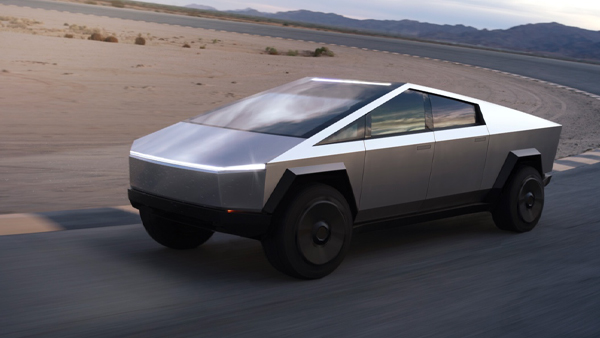
Tesla Cybertruck Tesla
While the COVID-19 pandemic has led to plummeting auto sales and oil prices, these commitments of auto makers are unlikely to waver given the many billions already invested. The government mandates helping drive the investments in electrification, at least in Europe and China, are likely to remain in force.
“The fundamental story remains unchanged,” said Nick Albanese, an analyst at BloombergNEF (New Energy Finance). He added that recent developments, including a rollback of vehicle efficiency standards in the U.S. “may delay electrification by one to two years but will not postpone it indefinitely.”
Turn around
As recently as 2012, the extent of most auto industry involvement with EVs were undersized and mostly impractical EV “compliance cars” produced just to meet California requirements for zero-emission vehicle sales. Small cars such as the Honda Fit EV, with an 80-mile range, were standard vehicles converted to electric, with necessary compromises in performance.
Producing these allowed the industry to continue selling all manner of gas vehicles to California’s residents and helped populate those legendary LA traffic jams.
Still, the possibility of EVs as a potential new market held allure. Carmakers rolled out various gasoline-electric hybrids in the early 2000s and eventually added hybrids with plug-in options such as the Chevy Volt (2010) and Toyota Prius PHV (2012). Nissan launched its fully electric Leaf in 2011 and marketed it nationwide.
Just a few years later companies signaled they were going all in on electric—even staking their futures to development of the vehicles. “General Motors believes in an all-electric future,” said Mark Reuss, General Motors executive vice president of Product Development in October 2017. As of April 2019, Reuters found that 29 global automakers were planning to invest at least $300 billion over the next five to ten years in electric vehicles. They had plans to roll out 150 or more vehicle models by 2025. A number of those roll-outs have recently been delayed in the face of the global economic downturn but they remain very much a part of the industry game plan.
A Good Bet
The turn-around in thinking was made possible by advancing technology, especially smaller more powerful batteries, but fundamentally it reflects companies responding to increasingly far-reaching actions by governments worldwide to combat climate change. That includes stringent emissions standards—many set to help achieve totally carbon free vehicles within two decades. That’s along with generous incentives including rebates for EV buyers, tax incentives, publicly funded charging infrastructure, and more.
Leading up to the COVID-19 crisis, it was all taking on greater urgency as evidence of the climate crisis mounted: the devastating fires in California and Australia, parts of Antarctica experiencing 60-degree high temperatures, extreme storms whipping across the American heartland, even a nearly snowless winter throughout much of the Northeastern United States. A World Meteorological Organization report confirms that 2019 was the second warmest year on record after 2016.
Still, even with governments taking aggressive steps and companies investing heavily, the public has mostly not been buying. EVs made up just over 2 percent of vehicles sold in the U.S. in 2019—329,000 EV sales compared to 16 million conventional vehicles. That, despite rebates and tax breaks, often amounting to several thousand dollars to buyers. The numbers were better in Europe and China but in total there are only about 7 million EVs on the road worldwide compared to 1 billion other vehicles.
But EV evangelists insist the bet the auto companies are making is a good one. Warner turns to history. “In 1915, autos were a miniscule share of the horse carriage market and within the space of 15 years that had completely reversed,” he said.
In its latest 2020 forecasts, BloombergNEF, while predicting a "bumpy" market over the next three years, sees the pace of EV sales continuing to grow strongly over the long term. EVs will be 28 percent of all vehicle sales by 2030 and 58 percent by 2040. That projection assumes some drastic changes in the marketplace, car buying habits and technologies over just the next few years. Despite delays imposed by the pandemic, Bloomberg and other forecasters predict we’re still at the cusp of those changes.
Carrots and Sticks
The transportation sector accounts for 30 percent or more of greenhouse gas emissions, and governments have steadily tightened limits on carbon dioxide emissions from manufacturers’ model line-ups. The limits in much of the world are intended to help meet the target set in the 2015 Paris Climate Accords, signed by 189 countries, to prevent global average temperatures from rising more than 1.5 degrees Celsius above pre-industrial levels.

Closing Ceremony of the 2015 international climate conference in Paris. United Nations
The European Union has steep fines that kick in this year for companies that fail to meet carbon dioxide targets for their model fleets. But the slumping auto market has recently prompted some car makers to lobby for an easing of the targets. Many environmentalists are pushing back, insisting that any private sector bailouts or economic stimulus include “green” provisions to maintain progress against climate change.
The U.S.—at least at the federal level—is heading in a different direction than much of the world. Last fall, the Trump Administration signaled its intention to withdraw from the Paris Accords and just in April made good on its promise to drastically curtail fuel economy standards initiated by the previous administration. It has filed legal challenges to the waiver granted to California to set its own emissions standards and mandate zero emission vehicles.
Even so, 10 states have signed onto California’s standards and together with many cities have been actively taking steps to bolster the EV market. They are providing subsidies, sales tax waivers, rebates, special parking, carpool lane privileges and more. Localities are changing zoning and other ordinances to accommodate EV and charging infrastructure (see NJTPA’s report on the topic). They are purchasing EV’s for their own fleets to set an example and support manufacturers.
With the pandemic, that generosity could be scaled back—at least in the short term—as states and local governments face dwindling tax receipts and competing funding priorities. Again, environmentalists can be expected to push back.
But progress has already been made. Crucially, according to the Department of Energy, the network of Level 2 and direct current (DC) fast charging stations, many supported with public funds, increased by more than 40 percent from 48,000 in 2017 to nearly 69,000 stations in 2019, helping ease buyers “range anxiety.”
Government actions to support EV market expansion also target reducing nitrogen oxide, particulate matter and other pollutants—a particular issue in China where pollution not only threatens public health, but one study found, even darkens skies enough to reduce solar panel output by an average of 12 percent. China strictly limits car purchases in major cities unless they are electric. Reducing the use of fossil fuels to generate the electricity for charging is another priority for governments (see sidebar).
Tesla factor
Even without the government requirements and incentives, auto companies would have moved toward electrification eventually. Electricity is just a more efficient way to power the transportation system. It allows manufacturers to make vehicles that have fewer moving parts and allows factories to be streamlined with fewer workers. Vehicles can be built from the ground up to accommodate the latest tech features like automated driver assistance.
But another factor has accelerated the pace—Tesla. Founder Elon Musk saw the possibilities of EVs and has pursued them relentlessly since 2006, even while Wall Street and other automakers questioned his strategy and, at times, his sanity.

Tesla dealership in Vancouver. Kyle Pearce / flickr.com
In 2018, the company was deeply in the red with many predicting—and short sellers betting on—its demise. A Bloomberg article that year was titled, “Tesla doesn't burn fuel, it burns cash.” But that quickly changed. Tesla stock has been flying high, even during the pandemic.
Musk has imbued his Tesla cars with a tech coolness and elegance that single-handedly created a new market for EVs. In the U.S. fully three-quarters of all EV sales are Teslas (with smaller shares in the rest of the world). They are not cheap; the popular Model 3 starts at $39,000.
Competitors got the message. With climate change looming, governments ramping up mandates and Tesla changing the calculus for future profits, Warner said they “pretty much realized its either electrify or die.”
Holding pattern
The moves toward EVs by auto companies doesn’t mean they are abandoning the internal combustion engine any time soon. The best-selling vehicle in the U.S, for 45 years running has been the Ford F150 truck; right on its heels are Chevy Silverado and Dodge RAM trucks—all powered with 6 or 8 cylinders (though most cars now have 4 cylinders reflecting the impact of federal fuel economy standards).
The companies will keep on pushing those vehicles until a tipping point when the number of EV car buyers justifies a more widespread change-over, including retooling of factories and reorienting sales and distribution networks. That had been forecast to happen as early as 2025, driven by the relentless fall in price of battery packs, which now make up around 40 percent of EV costs.
According to Albanese, the BloombergNEF analyst, battery pack prices have fallen 90 percent in the last decade and are continuing to drop. He expects “EVs with a 200- to 300-mile range priced competitively with [gas and diesel powered] vehicles on an unsubsidized basis in just the next few years.” When that happens, he said, “governments won’t need to offer upfront subsidies to get folks to buy EVs.” It could begin a new era of EV affordability.
The COVID-19 crisis has not substantially altered those projections. Albanese notes that “Most investments in building up the [battery] supply chain have already been made.” That includes new plants to realize economies of scale in manufacturing.
But for now, the small EV market is still very much dependent on—and highly sensitive to—continued subsidies. In 2019, as its economy slowed, China halved its subsidies to EV makers, which had allowed them to reduce their car prices. EV sales fell 54 percent for the year.
Something similar, though not as drastic, happened in the United States, and sales dropped about 10 percent last year. “That was not necessarily surprising,” said Albanese, attributing much of it to the decline in federal subsidies for GM and Tesla buyers. Both companies sold more than 200,000 EVs, crossing the threshold for the phase out of buyer tax breaks. They’ll fall to zero by the end of 2020. In the fall, Congress failed to pass a bill that would have raised the threshold to 600,000.
In China, bolstering the EV market has become part of economic stimulus. In April, the nation extended subsidies set to expire for lower priced EVs.
As companies wait for their return on investment in EVs, they are closely guarding their profits from other vehicles. Some companies have negotiated with California for flexibility in meeting requirements for ramping up EV sales. GM and Toyota took a more strident approach, joining with the Trump Administration in challenging the state’s mandates in favor of a national standard, which many see as a betrayal of their stated corporate commitments to EVs.
All the while, the companies are competing intensely to find the right combination of technologies and designs so they can capture buyers in the potentially huge EV market just over the horizon. A particular milestone was slated to occur this year as the first EV pickup trucks hit the market—not just the radical Cybertruck and Hummer but more conventional, though bold, designs like the R1T pick-up being produced by Rivian and backed by Ford (which has its own electric version of the F150 in the works).
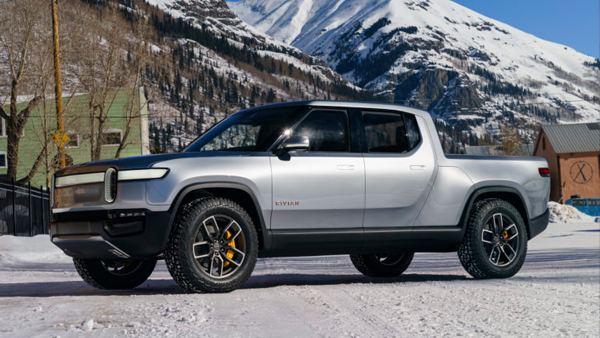
Rivian R1T to be launched in 2021. Rivian
The Rivian launch has now been delayed for a year due to the pandemic. Once the market rebounds, the burning question is, will all those truck buyers—accounting for up to 18 percent of all vehicle purchasers—even consider them?
Convincing Buyers
The premium price of buying an EV is one barrier to a wider consumer market. Because Tesla and other manufacturers have courted the luxury market, the average sticker price of EVs by one estimate is $55,000 compared to $36,000 for standard gasoline vehicles. There are some low-cost models. A Nissan Leaf retails for $29,990 and is eligible for thousands of dollars in rebates depending on the state. But more well-appointed models tend to be thousands more than gasoline counterparts even with rebates.
It’s not just affordability holding back the EV market. Range anxiety is real, though it may be on the wane now that many EVs are passing the 200-mile range and chargers have proliferated. A survey by AAA confirms that 95 percent of EV owners report never having run out of a charge while driving.
In fact, most charging occurs at home. “I like not having to go to the gas station. I come home at night, plug it in. It’s done,” says Tom Moloughney, a former restauranteur turned EV writer and consultant.
But to approach the current convenience of “gas and go” at the nation’s 160,000 gas stations, many more public chargers are needed, particularly of the fast variety. A fast charger can typically add up to 80 miles of range in 20 minutes compared to spending an hour to get 25 miles of range on a Level 2 charger.
New Jersey’s recent legislation will underwrite a network of 400 fast chargers no more than 25 miles apart. It also supports in-home and apartment building chargers.
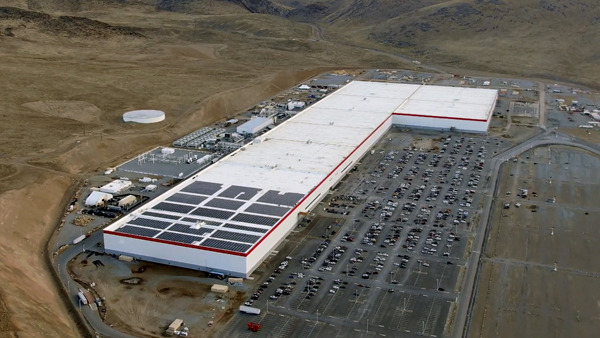
Tesla Gigafactory 1 in Nevada. smnt
Technology at some point may permanently put anxieties to rest. Battery development is a hot area of research with potentially big payoffs for investors. Tesla batteries, made in the company’s Gigafactories, power cars up to 370 miles, far ahead of its rivals. Samsung has a prototype of a solid-state battery with a 500-mile range. Cambridge University and several tech startups are exploring modifying the chemistry of lithium batteries, promising full charges in five minutes.
For now, EV owners must settle for some inconvenience in powering their cars but they get cheaper operating costs. It’s conventional wisdom that electricity costs about half as much as gasoline on a per mile basis (though that may no longer hold in the current depressed oil market). EV savings are also being crimped as states are starting to impose fees to recoup money lost on gas sales. Gas taxes fund infrastructure improvements, so states are looking at a variety of options to raise revenue for road repairs and maintenance. In Illinois EV buyers pay $100 more per year for registration. That trend may ramp-up in the face of dwindling state budgets.
Other parts of the transportation sector are also moving towards electrification including fleets, larger trucks, buses and other vehicles (see sidebar).
Progress
Year-by-year leading up to the pandemic, a growing number of consumers had been throwing any cautions and anxieties to the wind to purchase their own EVs. Albanese sees a continuing “organic demand” for EVs despite the crisis. Indeed, sleek Teslas have become a status symbol and buying one can be an exercise in conspicuous consumption.
But buying an EV can also be an exercise in conspicuous environmentalism—putting your environmental commitment on the street and in your driveway to encourage neighbors and other drivers to follow suit. It started decades ago with the Toyota’s Prius, the first mass-market electric hybrid with the distinctive front slope. Even the brainy cartoon dog Brian on the Fox animated series Family Guy got one.
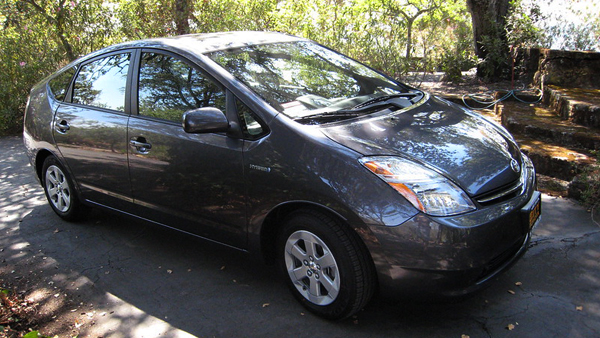
2007 Toyota Prius. Dom Sagolla / Flickr.com
Sales of the Prius have declined in recent years, in part, as its eco-distinctiveness has been diluted by all the other EV and hybrid models on the market, particularly Telsas. Toyota’s RAV4 hybrid now outsells the Prius. GM and Volkswagen have dropped hybrids altogether from their line-ups in favor or all electric models which typically get the largest rebates. The companies “are following the subsidies,” Albanese said.
As the economy rebounds from the pandemic, automakers are banking that a growing street presence of EVs will snowball the appeal of the cars. Warner said as that happens, “everyone will either know someone that owns one or somebody in their neighborhood will have bought one … that starts to make a big difference” in boosting sales. He said buyers will start to show their purchases off to friends “at the next barbeque.”
That social norming has happened with solar panels. In his article “Thy Neighbor’s Solar Panels” in
The Atlantic, Robert Frank cited Google’s Project Sunroof which displays the location of homes with solar panels with red dots on a map. “Those houses tend to be near others with red dots,” he notes.
He called it “social contagion” (now with an unwelcome connotation), arguing that it creates the prospect of rapid change in people’s behavior. He said it was responsible for the drastic reduction in smoking in recent decades and could very well bolster support for behaviors that reduce climate change, including buying EVs. The shared experience of the COVID-19 crisis may actually strengthen social influencing among people in that civic direction.
Tesla already has the ball rolling, spreading EV appeal among luxury car buyers. Extending that to a wider range of potential buyers will require more than finding the right price point and increasing mileage ranges—though those will be necessary. It will require creating vehicles that excite passion and provoke barbeque conversations. They must be cars that people (and their peers) avidly want to buy.
Moloughney sees that beginning to happen on showroom floors where he conducts training on selling the cars.
“What we see now, finally, is variety,” he said . “There had been no electric crossovers, or SUVs just two years ago.” More are on the way. Since it takes four to five years to bring a car to market, he notes, “What the companies are working on now you’ll see in 2025–2026.”
As those vehicles hit the streets, the best case for progress on climate change will be that they finally help integrate EVs into America’s deeply engrained car culture—in which the car you drive is part of your identity, in which driving is an exercise of individuality and personal liberty. It’s a tall order but one that increasingly seems within reach. ♦
Mark Solof is director, public affairs and communications,at the NJTPA.